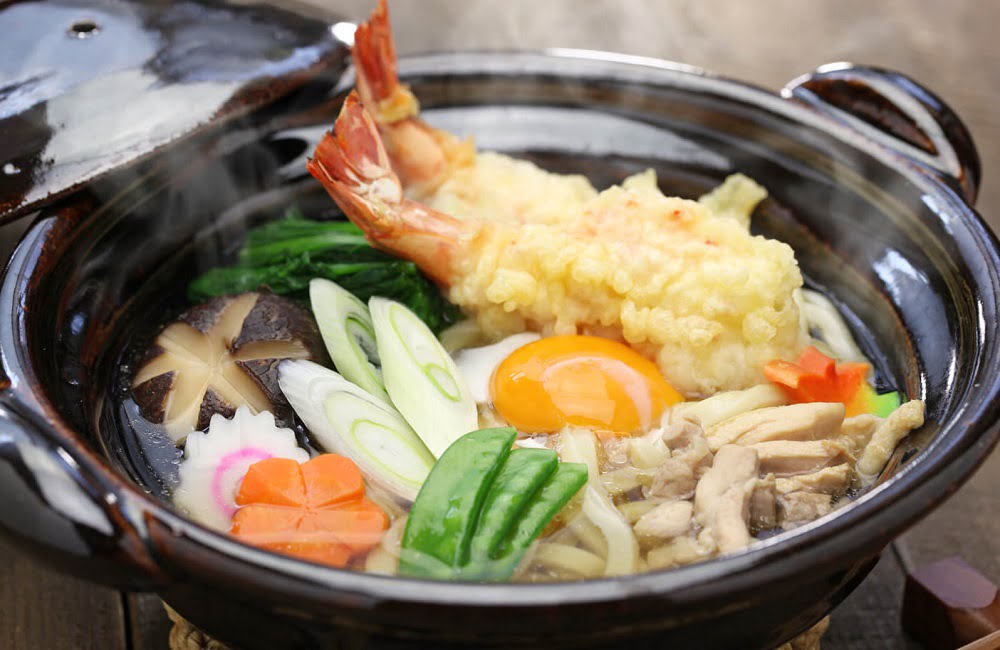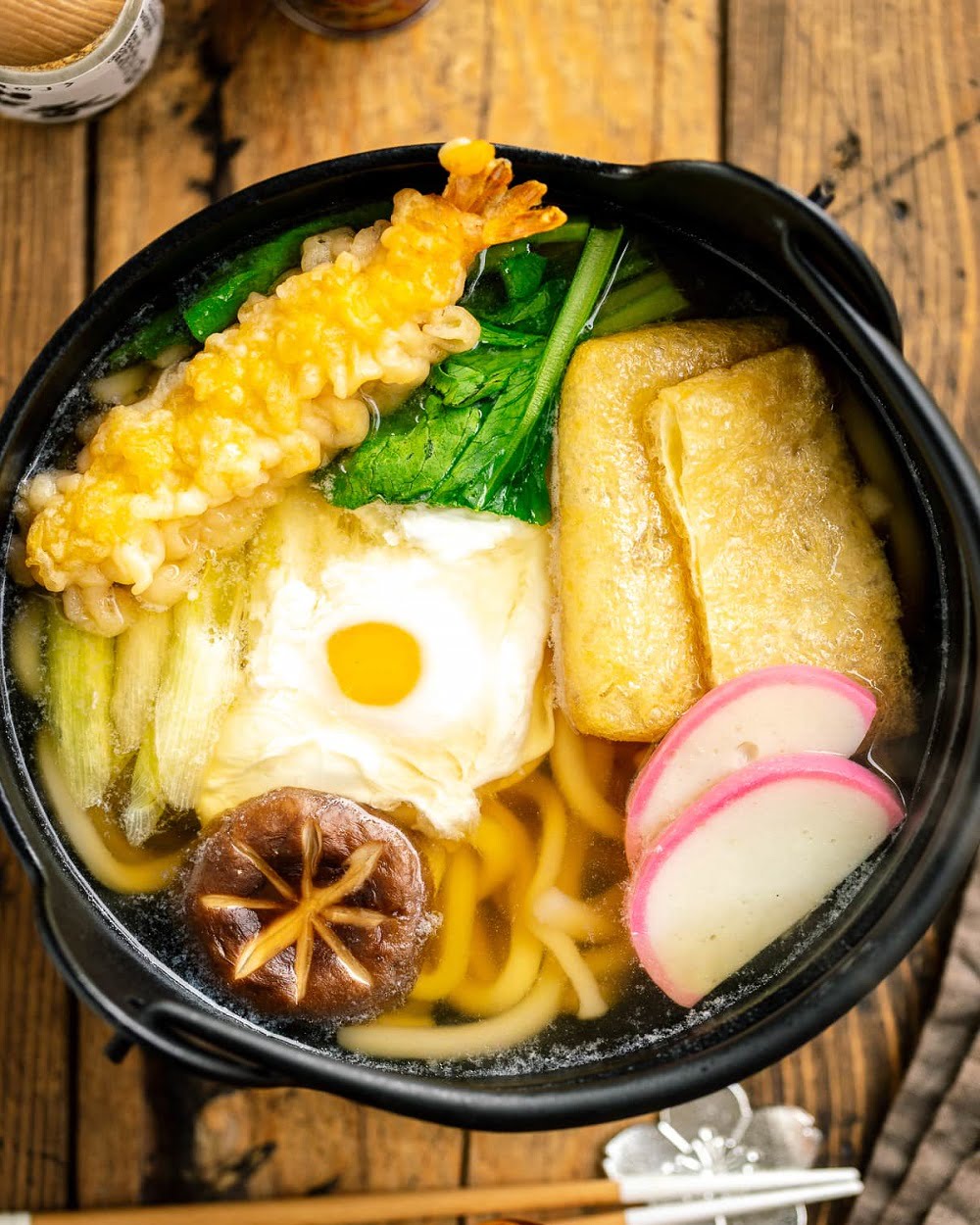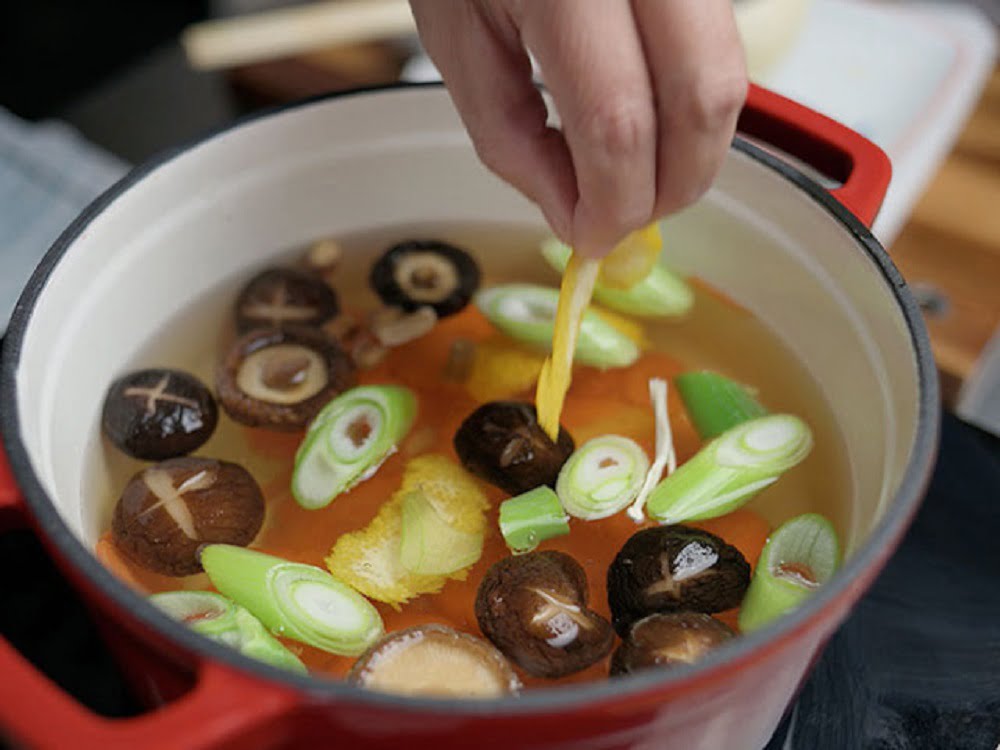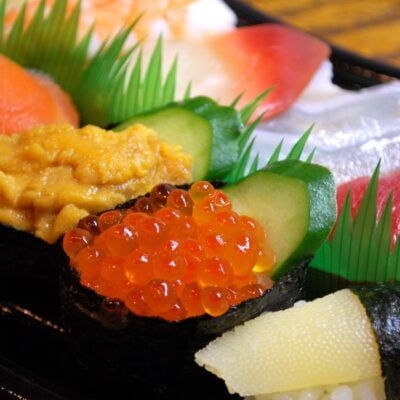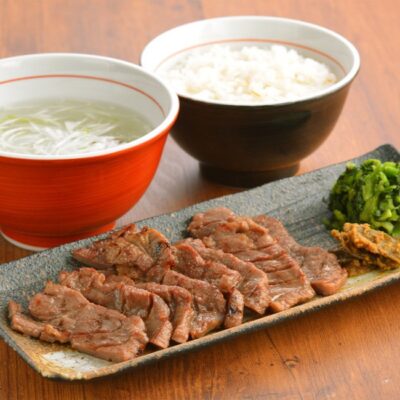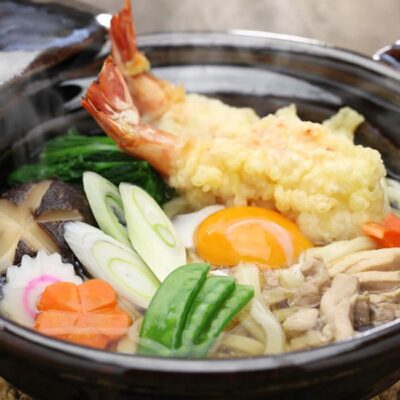Directions
Introduction
If you’re looking for a hearty and comforting dish to warm you up on a cold winter day, look no further than Nabeyaki Udon Soup. This hot udon noodle soup is a wintertime staple in Japan and is sure to leave you feeling satisfied and cozy. Traditionally served in individual donabe, or Japanese clay pots, this soup is made with thick chewy udon noodles cooked in a flavorful dashi broth. It is then enhanced with kamaboko fish cake, deep-fried tofu pouch, scallions, and an egg. The finishing touch is often a crispy shrimp tempura that adds a delightful crunch to every spoonful.

The Beauty of Nabeyaki Udon Soup
Nabeyaki Udon Soup is a dish that not only satisfies your hunger but also warms your soul. Its rich and savory flavors come from the dashi broth, which is made from kombu (seaweed) and bonito flakes, giving it a unique umami taste. The chewy udon noodles add a delightful texture to the soup, while the kamaboko fish cake and deep-fried tofu pouch provide additional layers of flavor. The scallions and egg contribute freshness and a creamy richness, respectively. And let’s not forget the crispy shrimp tempura that takes this soup to the next level with its irresistible crunch.
Making Nabeyaki Udon Soup at Home
While you might think that making Nabeyaki Udon Soup at home is a daunting task, it is actually quite simple. There are different recipes available online that provide step-by-step instructions on how to recreate this traditional Japanese dish. Plus, most of the ingredients can be easily found in your local supermarket. So let’s dive into the details and learn how to make this comforting soup in the comfort of your own kitchen.
Steps
1 Done | |
2 Done | |
3 Done | |
4 Done | Slice the kamaboko fish cake and deep-fried tofu pouch into bite-sized pieces. Add them to the soup along with the scallions. |
5 Done | |
6 Done | |
7 Done | |
8 Done | Customization OptionsIf you want to customize your Nabeyaki Udon Soup, feel free to add your favorite ingredients such as mushrooms, bok choy, or any other vegetables you enjoy. Simply sauté or blanch them separately and add them to the soup just before serving. |
9 Done | Frequently Asked QuestionsQ: Can I use other types of noodles in Nabeyaki Udon Soup? A: While the dish is called "Udon" soup, you can certainly experiment with other kinds of noodles. Soba noodles or even ramen noodles can be used as a substitution, although it may alter the overall flavor and texture. Q: Can I make a vegetarian version of Nabeyaki Udon Soup? A: Absolutely! You can substitute the dashi broth with a vegetarian alternative made from kombu and shiitake mushrooms. Additionally, you can omit the kamaboko fish cake and shrimp tempura and add more vegetables and tofu for a satisfying vegetarian option. Q: How can I make the soup spicier? A: If you prefer a spicier version of Nabeyaki Udon Soup, you can add a dash of chili oil or a sprinkle of shichimi togarashi, a Japanese seven-spice blend. Adjust the amount according to your desired level of spiciness. Q: Can I freeze leftover Nabeyaki Udon Soup? A: While it is generally recommended to enjoy this soup fresh, you can freeze any leftover soup. However, keep in mind that the texture of the udon noodles and other ingredients may change upon thawing and reheating. Q: Are there any traditional garnishes for Nabeyaki Udon Soup? A: In addition to the crispy shrimp tempura, you can garnish your soup with a sprinkle of finely chopped green onions, toasted sesame seeds, or even a drizzle of soy sauce or ponzu sauce for added flavor. Q: Is Nabeyaki Udon Soup gluten-free? A: Udon noodles are typically made from wheat flour, so they are not gluten-free. However, there are gluten-free versions available in some stores or online retailers. Additionally, you can explore other gluten-free noodle options such as rice noodles as a substitution. |
10 Done | In ConclusionNabeyaki Udon Soup is a comforting and hearty dish that brings warmth to cold winter days. Its combination of chewy udon noodles, flavorful dashi broth, and a variety of toppings creates a delightful and satisfying eating experience. Whether you choose to make it with traditional ingredients or customize it to your liking, this soup is sure to please your taste buds and leave you feeling cozy inside. So why not try making Nabeyaki Udon Soup at home and indulge in a taste of Japan's wintertime staple? |

